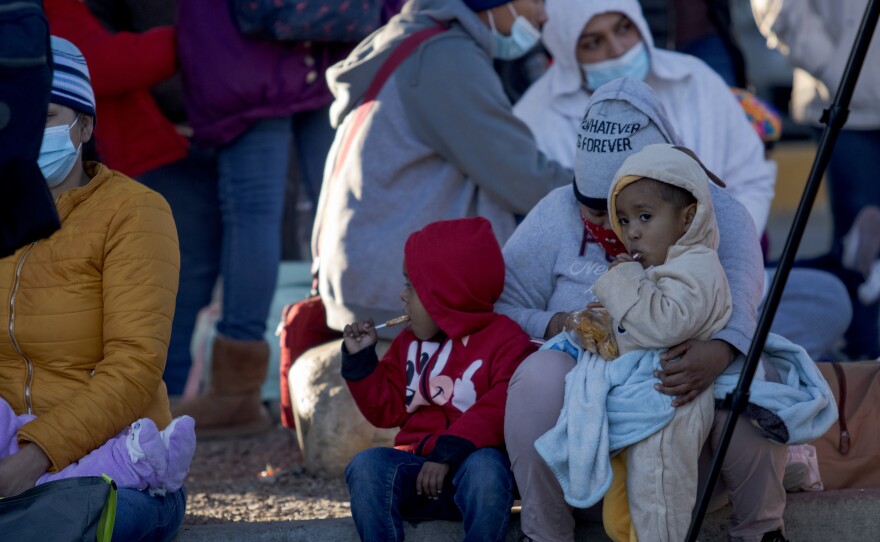Twenty-five asylum-seekers were loaded onto a bus on Friday morning and driven into the United States, where they’ll continue their asylum cases. Each asylum-seeker had been sent back to Mexico under the “Remain in Mexico” program, also known as the “Migrant Protection Protocols.”
The controversial Trump administration program sent over 65,000 asylum-seekers back to Mexico while their asylum cases played out in U.S. courts. The Biden administration moved to end the program last month, and began processing asylum-seekers at the U.S.-Mexico border at the San Ysidro Port of Entry.
RELATED: Biden Administration To Start Processing Asylum-Seekers Sent Back To Tijuana
While hundreds will likely follow in the coming weeks, many others who were at the port of entry on Friday will be ineligible to be admitted under the new policy. That's because many of them do not have open cases under the “Remain in Mexico” program. Therefore, they must wait until the Biden administration widens who can qualify for processing.
Some asylum-seekers had camped out for days for a chance to enter the United States. One of those was Marjorie Rosales.
She’s from Honduras, which she fled in 2019 because she was sexually assaulted after an extortion attempt. She spent one year in Chiapas, Mexico, waiting for a visa, and has been in Tijuana for a year. She desperately wants to claim asylum for her and her 2-year-old daughter. She makes a living selling ice cream on the street.

“I hope the president opens his heart and helps us, those of us on the border, because we’re sleeping outside and it’s cold,” she said.
Many migrants came to the port of entry Friday looking for information. Advocates handed out flyers to explain who qualified for the new policy, but the border remains closed for almost all asylum-seekers.
Mexican officials explained to disappointed migrants that almost all of them wouldn’t be allowed to enter the U.S. under the new policy. That includes the thousands of Haitians and Cameroonians in Tijuana who were never enrolled in the program.
Through a bullhorn, Alex Mensing, who works for the group Innovation Law Lab, helped migrants understand the process while standing in the plaza in front of the port of entry.
“A lot of people have shown up at the border who maybe don’t have a lot of information. Who maybe don’t understand what MPP means, who have heard rumors or don’t have information about what is going to happen today,” he said.
The 25 people that were admitted to the U.S. Friday were tested for COVID-19 beforehand. They’ll now be helped by the San Diego Rapid Response Network, a coalition of local non-profits, and the county, which has provided hotel rooms for the asylum-seekers.

"They’ll be transported to local hotels and then we’ll begin that work of doing the health screening, figuring where they’re going, helping them make contact, figuring out whether they have the funds or if we need to provide the funds for air travel,” explained Michael Hopkins, the CEO of Jewish Family Service, a leading member of the rapid response network.
The network says it’s well-prepared for the program to ramp up to hundreds of asylum-seekers each day.
But for the thousands in Tijuana, like Marjorie Rosales, for whom this program doesn’t yet apply, they’ll continue to remain in Mexico.








